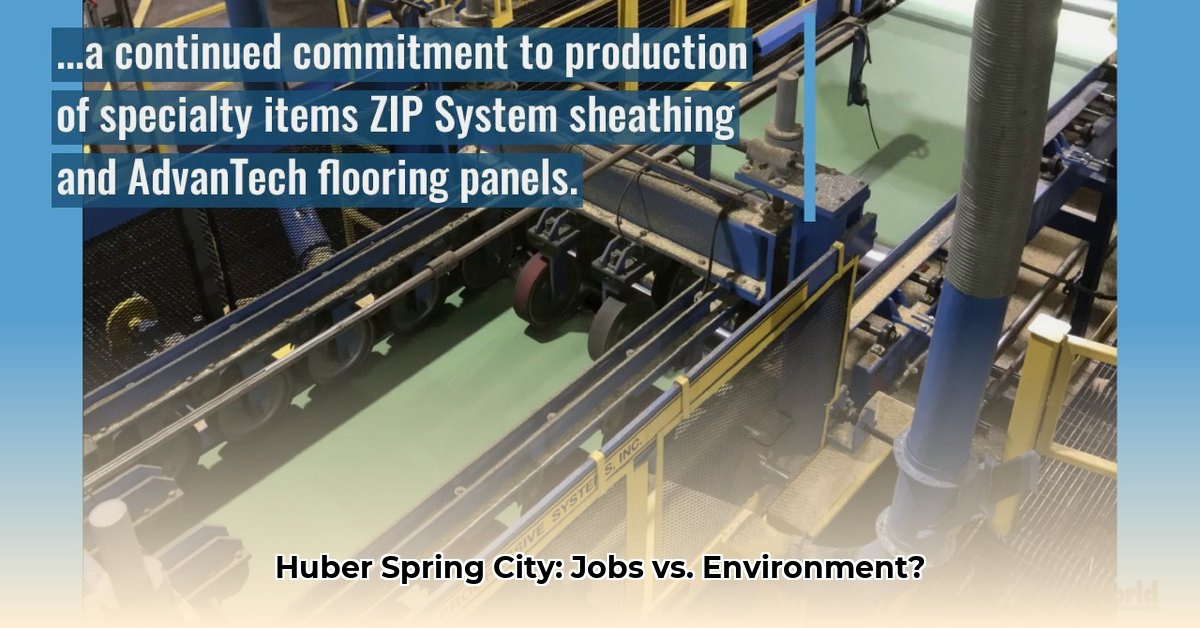
Huber Spring City TN: A Balancing Act of Jobs and the Environment
The reopening of the Huber Engineered Woods oriented strand board (OSB) plant in Spring City, Tennessee, presents a complex scenario. The creation of 141 jobs is a significant economic boost for Rhea County, an area with approximately 6% unemployment. This revitalization offers increased spending in local businesses, higher tax revenues, and potential for broader regional growth. However, the environmental impact of OSB production necessitates careful consideration. This article analyzes the economic benefits alongside potential environmental consequences, examining the responsibilities of various stakeholders and outlining steps towards sustainable operation. For more information on job opportunities in the area, check out local job resources.
Economic Upswing in Rhea County: A Closer Look
The 141 new jobs represent a substantial economic injection into Spring City and Rhea County. Increased local spending, higher tax revenues, and a potential ripple effect across the regional economy are anticipated. This influx of jobs could lead to increased property values, improved infrastructure, and the attraction of further businesses, ultimately enhancing the community’s quality of life. However, a comprehensive analysis is needed to fully understand the extent and long-term sustainability of these positive impacts.
Environmental Concerns: A Necessary Conversation
OSB manufacturing is energy-intensive, consuming considerable resources and generating waste. Transportation of raw materials further increases its environmental footprint. Currently, the Huber Spring City facility's specific environmental performance data is unavailable publicly. This lack of transparency is a major concern. Without data on energy consumption, emissions, and waste, a precise assessment of the environmental impact remains impossible. Further investigation is crucial, possibly through a comprehensive life-cycle assessment (LCA) – a detailed analysis of the environmental impacts of a product throughout its entire life cycle—from raw material extraction to disposal. Sustainable forestry certifications, such as the Forest Stewardship Council (FSC) certification, are essential for ensuring responsible wood sourcing, but their implementation at this facility remains unclear.
A Call for Action: Collaboration is Key
Addressing both economic and environmental aspects requires collaboration among various stakeholders.
Huber Engineered Woods: Publicly releasing data on energy use, emissions, waste, and wood sourcing is essential. Investing in sustainable production methods, including using recycled materials or researching alternative binding agents, should be prioritized. A comprehensive and clearly defined sustainability plan with specific targets is needed.
Rhea County Government: Supporting economic growth requires strategic planning. Investing in worker training programs tailored to the plant's needs ensures a skilled workforce. Furthermore, attracting other sustainable businesses diversifies the local economy, mitigating risks associated with overreliance on a single industry.
Tennessee State Government: Investing in improved transportation infrastructure enhances efficiency, reducing the plant's environmental impact. State environmental policies should encourage sustainable forestry and reward environmentally responsible business practices. Incentives for businesses adopting sustainable manufacturing processes would further encourage positive change.
Environmental NGOs: Independent assessments and monitoring hold the company accountable for its claims. Collaboration between NGOs and Huber Engineered Woods fosters transparency, leading to mutually beneficial outcomes. NGOs play a vital role in providing unbiased data and advocating for stronger environmental regulations.
Consumers: Informed consumer choices can drive positive change. Choosing OSB products from companies demonstrating a commitment to sustainable practices encourages the industry to adopt greener processes.
Navigating the Risks: A Proactive Approach
Effective risk management is crucial.
| Risk Category | Likelihood | Impact | Mitigation Strategy |
|---|---|---|---|
| Unsustainable Sourcing | Moderately High | Very High | Implementing and adhering to FSC certification; transparently disclosing sourcing information; investing in forest regeneration. |
| Negative Environmental Impact | Moderately High | High | Conducting a thorough LCA, investing in emission reduction technologies, implementing comprehensive waste management strategies. |
| Market Volatility | High | Very High | Diversifying product offerings; investing in research and development to improve product competitiveness and meet shifting market demands; strategic marketing and supply chain management. |
| Labor Shortages | Low | Moderate | Proactive workforce training and development; offering competitive compensation and benefits packages; partnering with local educational institutions. |
Regulatory Landscape: Staying Compliant
Compliance with local, state, and federal environmental regulations is paramount. Maintaining open communication with regulatory bodies, demonstrating adherence to existing rules, and proactively adapting to new regulations are essential for long-term operation.
Conclusion: A Path Forward
The Huber Spring City reopening highlights the necessity of balancing economic development and environmental responsibility. Transparency, collaboration, and a commitment to sustainability are vital. Continuous monitoring, independent assessments, and open communication are needed to navigate the challenges and ensure a positive outcome for both the community and the environment. The long-term success depends on a shared commitment to responsible growth and sustainable practices.